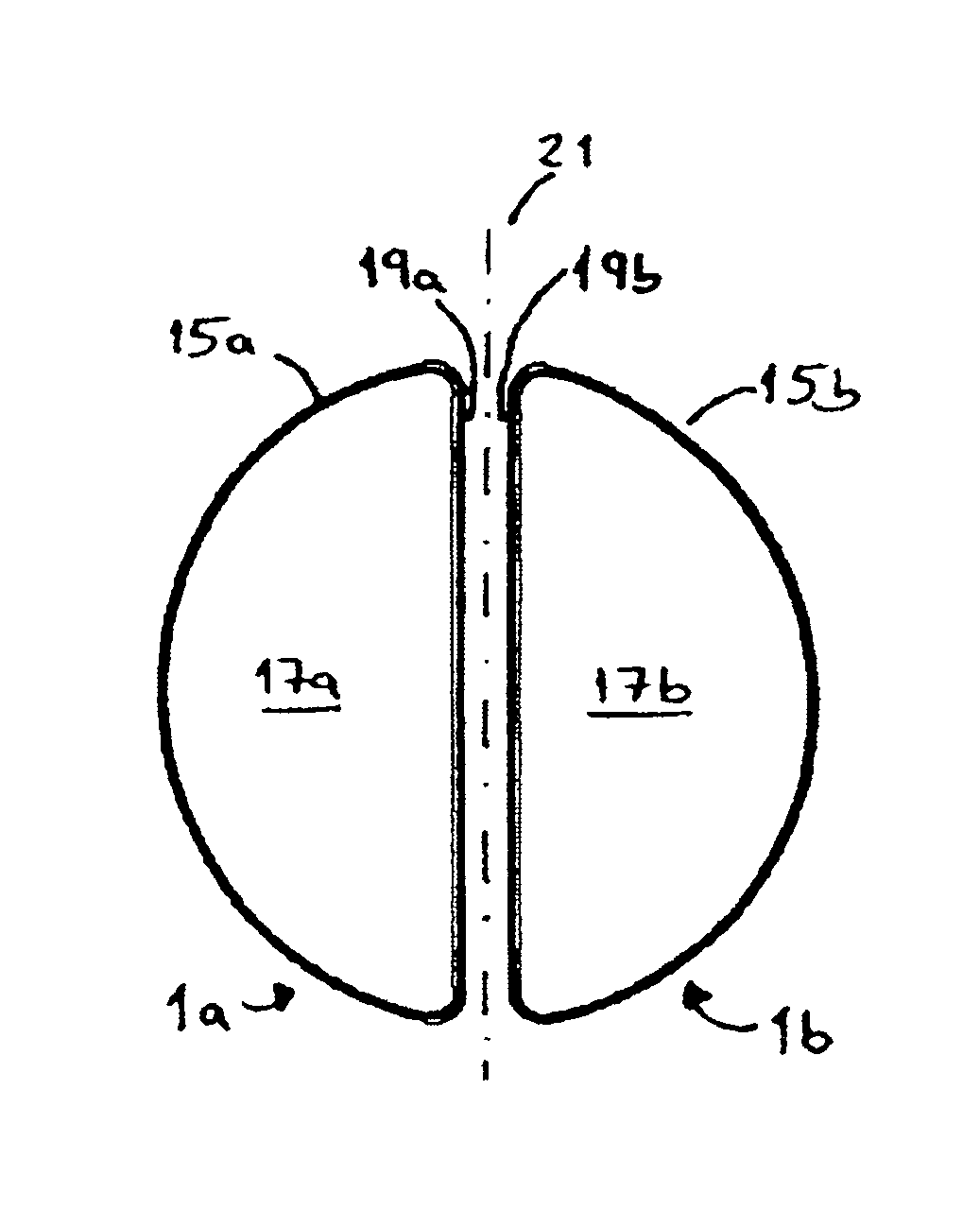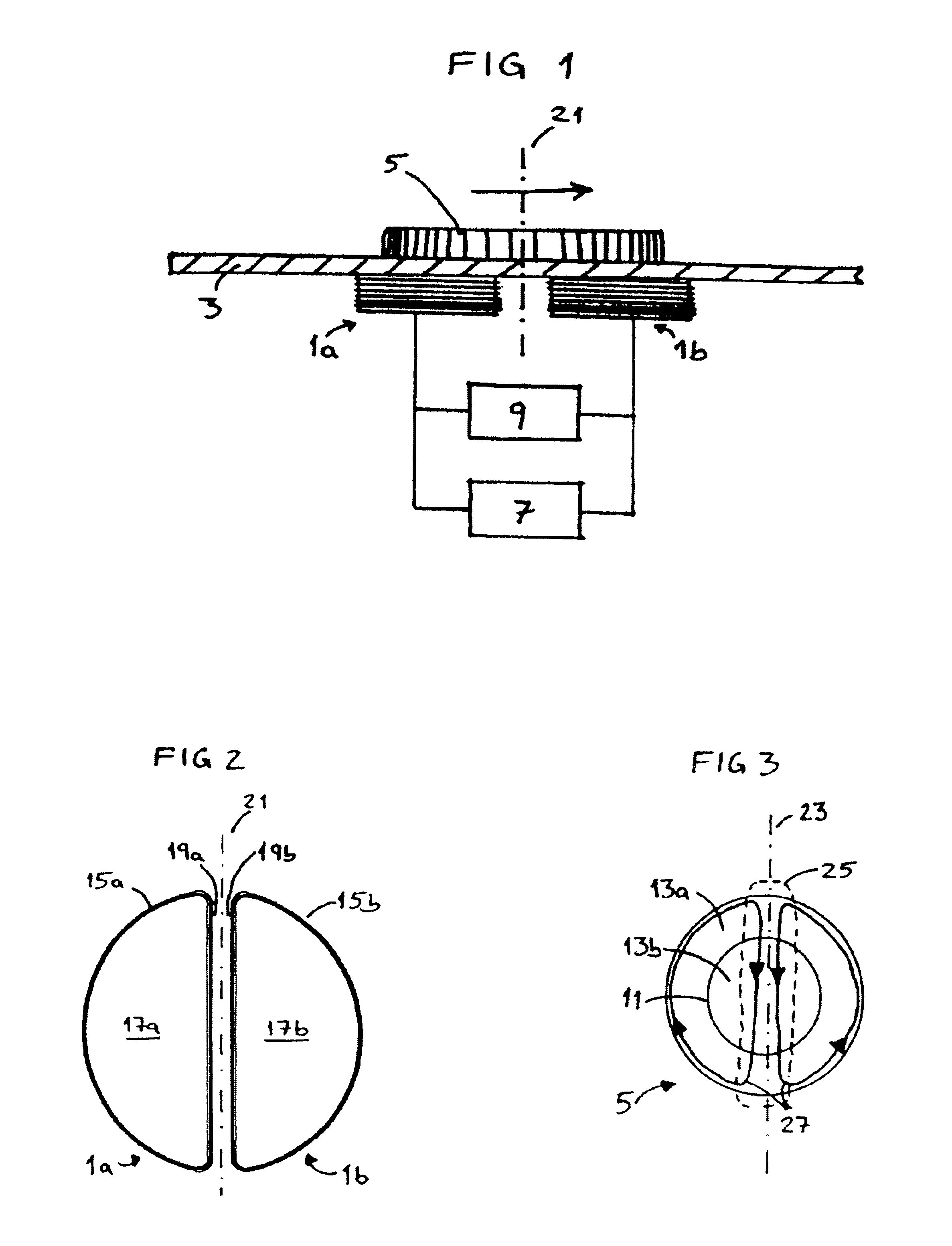Discriminator for bimetallic coins
a discriminator and bimetallic technology, applied in the field of coin discriminators, can solve the problems that the discriminator described above fails to provide a sufficiently and achieve the effect of repeatable and accurate determination of bond conductivity or resistan
- Summary
- Abstract
- Description
- Claims
- Application Information
AI Technical Summary
Benefits of technology
Problems solved by technology
Method used
Image
Examples
Embodiment Construction
As shown in FIG. 1 the coin discriminator comprises a coil means in the form of two coil portions 1a and 1b, which are connected to an electrical device 7 for supplying voltage pulses thereto. Furthermore, the coin discriminator comprises detection means 9 for detecting eddy currents induced in the coin by the magnetic pulses generated by the coil means in response to the voltage pulses supplied from the electrical means 7. The coil means 1a, 1b acts as a transmitter coil for exposing a bimetallic coin 5, which is moved past the coin discriminator along a 1 mm thick ceramic plate 3 in a direction indicated by an arrow, to a magnetic pulse giving rise to eddy currents in the coin 5, and furthermore the coil means acts as a receiver coil for detecting the magnetic field variations generated by the eddy currents in the coin 5 and converting them into a corresponding voltage signal.
As shown in FIG. 3, the coin 5 comprises a ring 13a of a first metal or alloy and a disc 13b of a second m...
PUM
 Login to View More
Login to View More Abstract
Description
Claims
Application Information
 Login to View More
Login to View More - R&D
- Intellectual Property
- Life Sciences
- Materials
- Tech Scout
- Unparalleled Data Quality
- Higher Quality Content
- 60% Fewer Hallucinations
Browse by: Latest US Patents, China's latest patents, Technical Efficacy Thesaurus, Application Domain, Technology Topic, Popular Technical Reports.
© 2025 PatSnap. All rights reserved.Legal|Privacy policy|Modern Slavery Act Transparency Statement|Sitemap|About US| Contact US: help@patsnap.com


